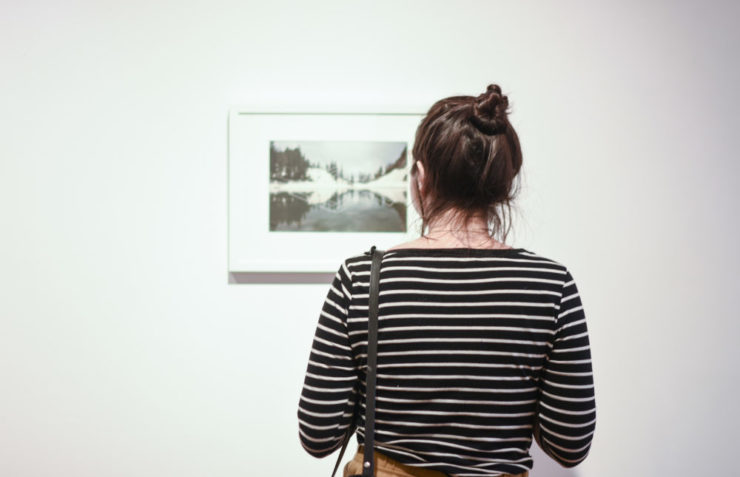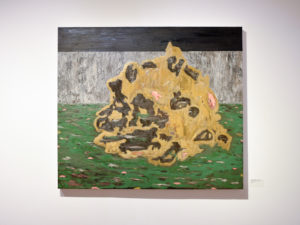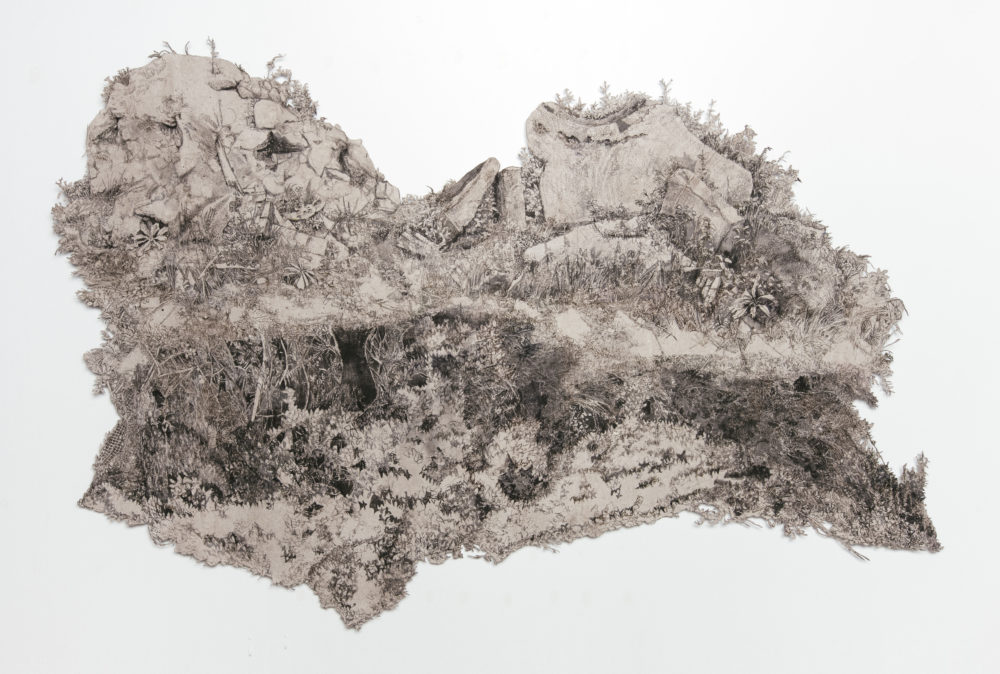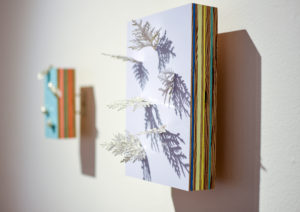We chatted with curator of Written Into Rock, Gina Iacobelli. See the exhibition from now until May 5, 2018. Learn more about it here.
This was your first time curating a show, what was the experience like?
It was really fun, but challenging as well. The artists are all separate people in separate places so it takes a lot of imagination to visualize the work all together. But when the work all came into the gallery I could see my vision turning into reality and that was very rewarding.
Did you have a specific vision when curating this show?
I wanted to focus on the tension between humans and nature without being too negative
or didactic. There is an ongoing push and pull relationship between the natural and the human-constructed worlds that is always changing and morphing – that is what I wanted to explore.
How did your background in arts history inform your decision making during the curation process?
My background in art history taught me to start with the art first. I had to make sure that the work I selected was visually intriguing and that it allowed the audience to come up with their own interpretations.
What’s the story behind Written Into Rock?
Written Into Rock was inspired by readings on the Anthropocene. The Anthropocene is a new proposed geologic era that describes humans’ presence in the geologic record. So there is literally evidence of the existence and efforts of humankind found on the earth’s surface. Therefore I selected work for the exhibition that explored a type of human “mark-making” on the natural world.
How is it relevant in the contemporary art world?
It’s relevant in the contemporary art world because it is relevant in our daily lives. Human projects have impacted the earth for millennia, but now technology has accelerated these efforts faster than we can predict the outcomes. Climate change and global warming are particularly worrisome. I believe it is the duty of contemporary art to address such global challenges.
Why did you choose the artists that are in this exhibition?
All of the artists I choose are dealing with manipulating natural forms in some way. Both Jessica Tenbusch and Kristina Sheufelt are using found natural material in their sculptural work, integrating it with human-made materials. Hannah Chalew uses found trash and plant matter to create her large-scale drawings. Even the more straightforward two-dimensional work has an element human intervention into the landscape as seen in the work of Brians Spolans, Philip Hanson, Mille Tibbs, and Michael Garguilo.
What kind of work can we expect to see?
The work is truly varied. Some exciting pieces incorporate found natural matter from animal bones to hornet’s nests. I think that these juxtapositions of human-made objects and natural matter really celebrate what the exhibition is all about – exploring the tension between humans and nature.
You mentioned that some of the pieces in this show require “close looking.” What do you mean by that? What pieces specifically require close looking?
In particular, Jessica Tenbusch’s work is done on a very intimate scale and requires the viewer to get close and look carefully. If you walk past the work without stopping to look closely you could miss the delicacy and detail that the artist puts into her work. What’s interesting is Jessica is a sculptor, but her works are wall-mounted which allows you to see them up close and at eye-level.
Why should people see this show?
If people are interested in the environment, they will get a lot out of the show. As I mentioned before, many of the works incorporate found natural materials in new ways. Even if you are not knowledgeable about environmental issues, the work can illustrate to the viewers the ways in which humans manipulate the landscape and it benefits us to reconsider our effect on the natural world.





